Enzo Ferrari Museum by Future Systems

The Enzo Ferrari Museum is a bold building that marks the end of two eras. On the one hand it effectively fossilises a structure that is as dear to any auto aficionado as the Vatican is to a devout Catholic; the original office and workshop of one Enzo Ferrari. This architectural reliquary is achieved with the construction of another milestone, the final building by Future Systems.
Jan Kaplicky's pioneering practice never really achieved the technological revolution it promised. When Kaplicky died in 2009, the monographs full of ambitious space age concepts remained on the page, with only a few signature buildings - Birmingham's Selfridges, the Lords Media Centre - to show for it. It was left to Kaplicky's former partner, Amanda Levete, to deftly take the sleekly futuristic and commercially viable elements of Kaplicky's obsessions and absorb them into her own highly accomplished designs and practice.
This final Kaplicky work, won in competition way back in 2004, is the Enzo Ferrari Museum in Modena, €18 million of highly polished auto nostalgia. Described as a 'bonnet', finished in yellow aluminium in homage to Modena's city colours, the same yellow chosen by Ferrari as the background colour to the Prancing Horse badge, the curved roof has vents inspired by the air intakes of his famous sports cars.
Born in 1898, Ferrari made his name as a racing team manager in the inter-war years - principally for Alfa Romeo - before eventually emerging as a full-fledged manufacturer in his own right in 1947. The new museum structure reaches around the original house like an 'open hand', its glass façade reflecting the traditional architecture of the restored offices, now serving as a gallery space.
In the display space beneath the soaring bonnet roof is a collection of significant cars - not just limited to Ferraris - tracing Enzo Ferrari's career from the early twentieth century onwards. After Kaplicky's death, the construction and detailing was skillfully managed by Andrea Morgante, formerly at Future Systems but now at Shiro Studio.
Opened in March 2012, the new museum will become an instant place of pilgrimage for Ferrari's faithful global congregation. But rather than take a one-dimensional view of the company's own output, the exhibits are a welcome overview of the great interwar motor-racing era and its evolution into the road and race cars of the post-war period - the era that Ferrari himself has come to define.

The museum's glass façade reflects the original buildings
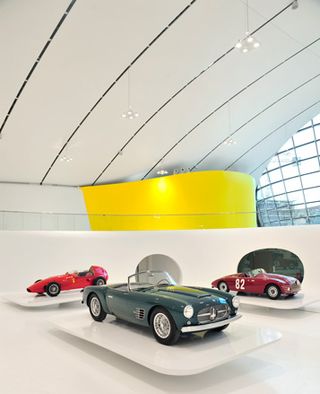
Inside the new building, from left to right: Stanguellini Junior racing car, dating from the late 1960s; Maserati A6G/54 2000 Spider, 1955, with an engine derived from Maserati's racing cars and bodywork by Zagato (this particular car was commissioned by Argentina's Juan Peron); and a Stanguellini 1100 Barchetta Ala d'Oro
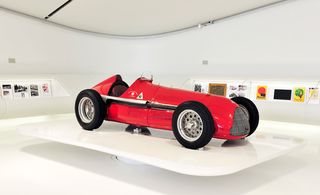
Alfa Romeo 158 Alfetta, an iconic post-war racing car
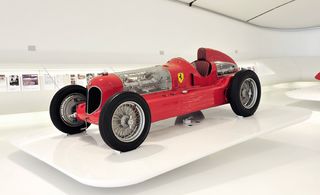
Alfa Romeo Bimotore. Often dubbed 'the first Ferrari', this twin-engined racer was developed by Enzo Ferrari whilst at Alfa Romeo in 1935 and became the first car to wear the Prancing Horse logo
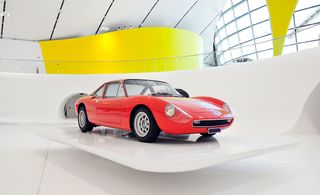
De Tomaso Vallelunga, 1965. Ultra rare mid-engined road car from Ferrari's rival De Tomaso
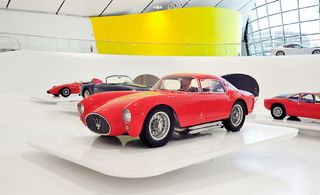
Maserati A6GCS Berlinetta Pininfarina. Another Ferrari rival, bodied by Pininfarina and developed for racing in the Mille Miglia in 1954
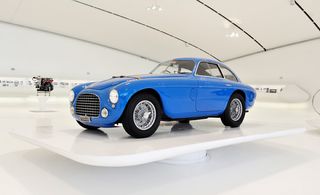
Ferrari 166 MM Coupé, 1948. A coupé version of Ferrari's second model, the 166

Maserati A6 1500 Pininfarina. Introduced in 1946, this was the first road-going Maserati
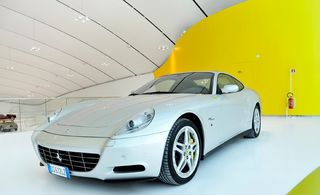
The 612 Scaglietti was introduced in 2004 and has now been replaced by the Ferrari FF
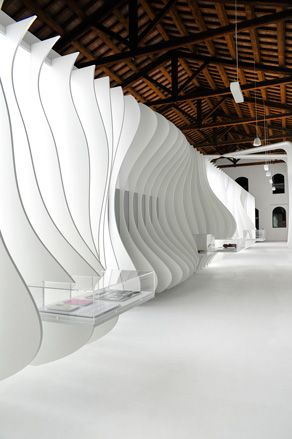
The interior of the renovated original office
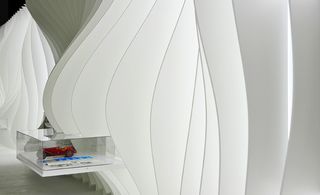
A series of undulating display cabinets house an exhibition of archive material
ADDRESS
Via Paolo Ferrari 85
41123 Modena
Wallpaper* Newsletter
Receive our daily digest of inspiration, escapism and design stories from around the world direct to your inbox
Jonathan Bell has written for Wallpaper* magazine since 1999, covering everything from architecture and transport design to books, tech and graphic design. He is now the magazine’s Transport and Technology Editor. Jonathan has written and edited 15 books, including Concept Car Design, 21st Century House, and The New Modern House. He is also the host of Wallpaper’s first podcast.
-
 Shigeru Ban’s mini Paper Log House welcomed at The Glass House
Shigeru Ban’s mini Paper Log House welcomed at The Glass House'Shigeru Ban: The Paper Log House' is shown at The Glass House in New Canaan, USA as the house museum of American architect Philip Johnson plays host to the Japanese architect’s model temporary home concept
By Adrian Madlener Published
-
 Artist Mickalene Thomas wrestles with notions of Black beauty, female empowerment and love
Artist Mickalene Thomas wrestles with notions of Black beauty, female empowerment and love'Mickalene Thomas: All About Love’, a touring exhibition, considers Black female representation
By Hannah Silver Published
-
 New Phaidon book celebrates the world's best designers
New Phaidon book celebrates the world's best designersDesigned for Life: The World’s Best Product Designers by Phaidon celebrates the rich contemporary landscape of product design
By Tianna Williams Published
-
 Giovanni Michelucci’s dramatic concrete church in the Italian Dolomites
Giovanni Michelucci’s dramatic concrete church in the Italian DolomitesGiovanni Michelucci’s concrete Church of Santa Maria Immacolata in the Italian Dolomites is a reverently uplifting memorial to the victims of a local disaster
By Jonathan Glancey Published
-
 Milan’s 10 Corso Como revamp nods to the concept store’s industrial character
Milan’s 10 Corso Como revamp nods to the concept store’s industrial characterMilanese concept store 10 Corso Como unveils its new look by 2050+, a stripped-back design that nods to its 20th-century character
By Ellie Stathaki Published
-
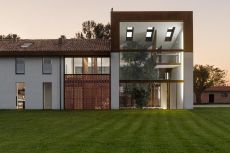 Carlo Ratti announced curator of Venice Architecture Biennale 2025
Carlo Ratti announced curator of Venice Architecture Biennale 2025Carlo Ratti has been revealed as the Director of the Architecture Department at the Venice Architecture Biennale 2025, with the specific task of curating the 19th International Architecture Exhibition
By Ellie Stathaki Published
-
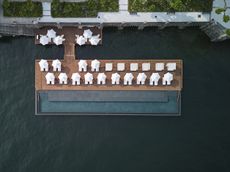 Floating infinity pool by Herzog & De Meuron at Lake Como is largest of its kind
Floating infinity pool by Herzog & De Meuron at Lake Como is largest of its kindHerzog & de Meuron creates the largest floating infinity pool in the world for Mandarin Oriental in Lake Como
By Lauren Ho Published
-
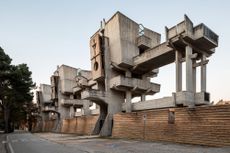 Best of brutalist Italian architecture chronicled in new book
Best of brutalist Italian architecture chronicled in new bookBrutalist Italian architecture enthusiasts and concrete completists will be spoilt for choice by Roberto Conte and Stefano Perego’s pictorial tour
By Jonathan Bell Published
-
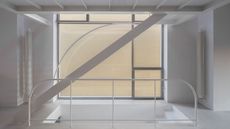 Studio Tropicana, Switzerland and Italy: Wallpaper* Architects’ Directory 2023
Studio Tropicana, Switzerland and Italy: Wallpaper* Architects’ Directory 2023Based in Switzerland and Italy, Studio Tropicana is part of the Wallpaper* Architects’ Directory 2023, our annual round-up of exciting emerging architecture studios
By Ellie Stathaki Published
-
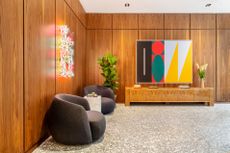 WeWork Meravigli blends past and present in a 21st-century office space
WeWork Meravigli blends past and present in a 21st-century office spaceWeWork Meravigli launches in Milan, bringing its ornate, historical new home to the 21st century
By Ellie Stathaki Published
-
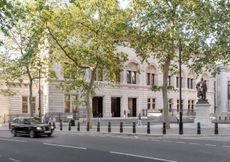 National Portrait Gallery reopens its refreshed home
National Portrait Gallery reopens its refreshed homeLondon’s National Portrait Gallery reopens with a design by leading architect Jamie Fobert and conservation specialist Purcell
By Ellie Stathaki Published